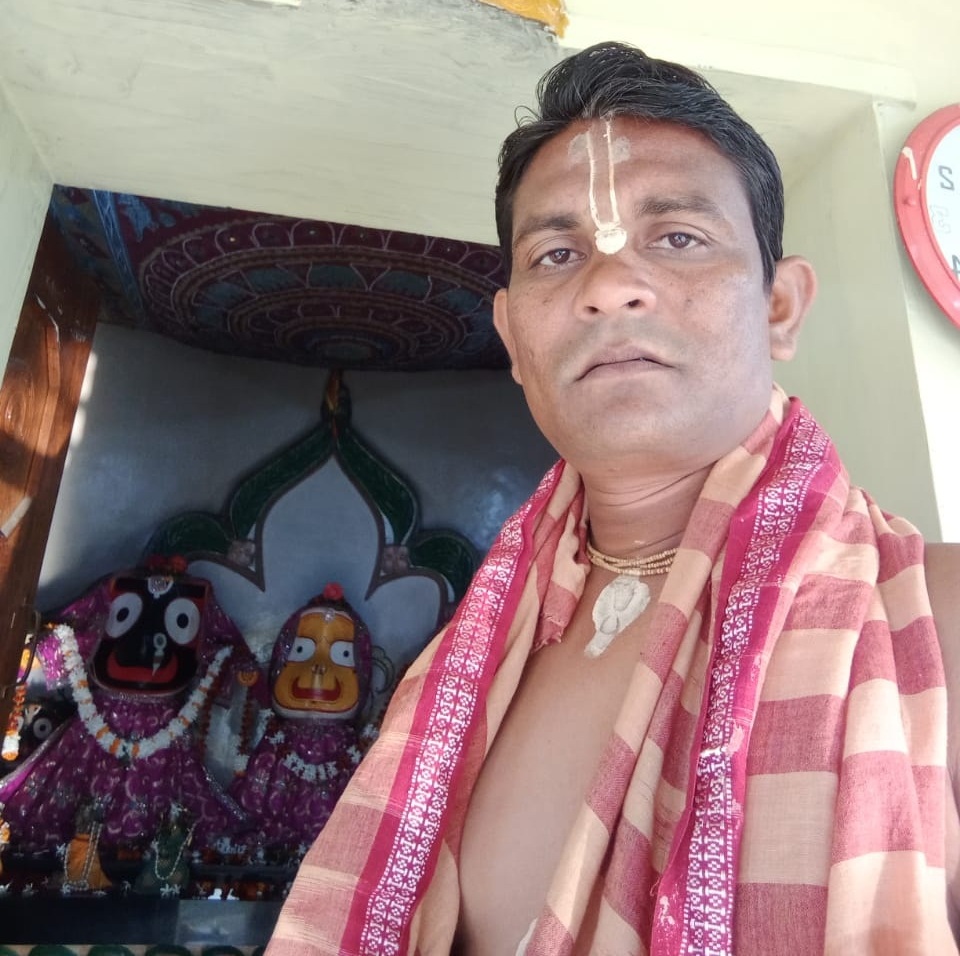Chandahandi: The age-old Odia tradition of Bhagabat Tungis is no more there in our modern day scheme of living, which every village in the state used to have earlier. We have left behind the tradition of having Bhagabat Tungis, in our march towards modernity.
However, a 30-year-old man named Ramesh Chauhan of Jamadarpada village under Chandahandi block in Nabarangpur district, who himself belongs to a scheduled caste, has come forward and setup over twenty Bhagabat Tungis in his peripheral villages.
Bhagabat Tungis were basically huts where epic ‘Bhagabat’ of eminent Odia writer Jagannath Das was being read aloud in evening hours, amid a gathering of local villagers listening with devotion. Tungis – once centres of social and spiritual activities – have gradually withered away, after facing neglect due to crunch of funds.
Though being a highly educated person, Ramesh works as postmaster in a local village post-office and creates awareness for Bhagabat Tungis. After he returns from his hectic government service, he moves from village to village in evening and spreads the goodness of epic ‘Atibadi Bhagabat’ among his fellowmen as well as the society at large.
“I was ordered by Lord Jagannath one day in my dreams, about ten years back. Following the instructions given, I recovered an idol of the deity from inside a river that flows down my village. Later, I built a temple with help of local villagers to enshrine the Lord,” Ramesh said.
As an exponent of Sanatan Dharma, Ramesh has expertise in recitation and elaboration of ‘Bhagabat’. He has got by heart entire 11 volumes of the epic scripture and also inculcates the essence of it in people around him. Spearheaded by his prolific efforts, Bhagabat Tungi tradition has furthered in Nabarangpur, local villagers said.
Earlier, the tradition of ‘Bhagabat’ recitation was enriching our social as well as cultural life. It had been reflecting rural lifestyle of people in the state. This tradition also largely contributed in shaping characters of people and creating a healthy society, which needs to be invigorated.
Realising the importance of Bhagabat Tungis in the lives of Odia people, the state government launched a drive to revive the Tungis in 2014 and granted funds for this purpose. Several Tungis applied for grant in the past days and applications got stuck with local block development officers (BDOs) leaving the noble institutions in lurch, a report said.
In fiscal 2014-15, the state Culture department had taken a decision to grant assistance of Rs 25,000 to each Tungi. The department again swung into action and invited applications from Bhagabat Tungis, to avail the grant by May 2016. Seeing huge number of applications from institutions across the state exceeding calculated limits, it decided again to sanction funds only to limited number of Tungis in each block.
It is known that over 11,500 applications were received from across the state. Ganjam district received highest number of 102 applications and Cuttack district received least number of 80 applications. Finally, the department fixed a target to restore 1,200 institutions in each fiscal.
Notably, ‘Bhagabat’ is not only a religious scripture but also considered as an integral part of Odia literature, culture and lifestyle. In the same way, Bhagabat Tungis have helped villagers in releasing their routine tribulations of life. The recitation of ‘Bhagabat’ starts on Bhagabat Janma (full-moon day of Bhadrav) and ends up a day before the next.
